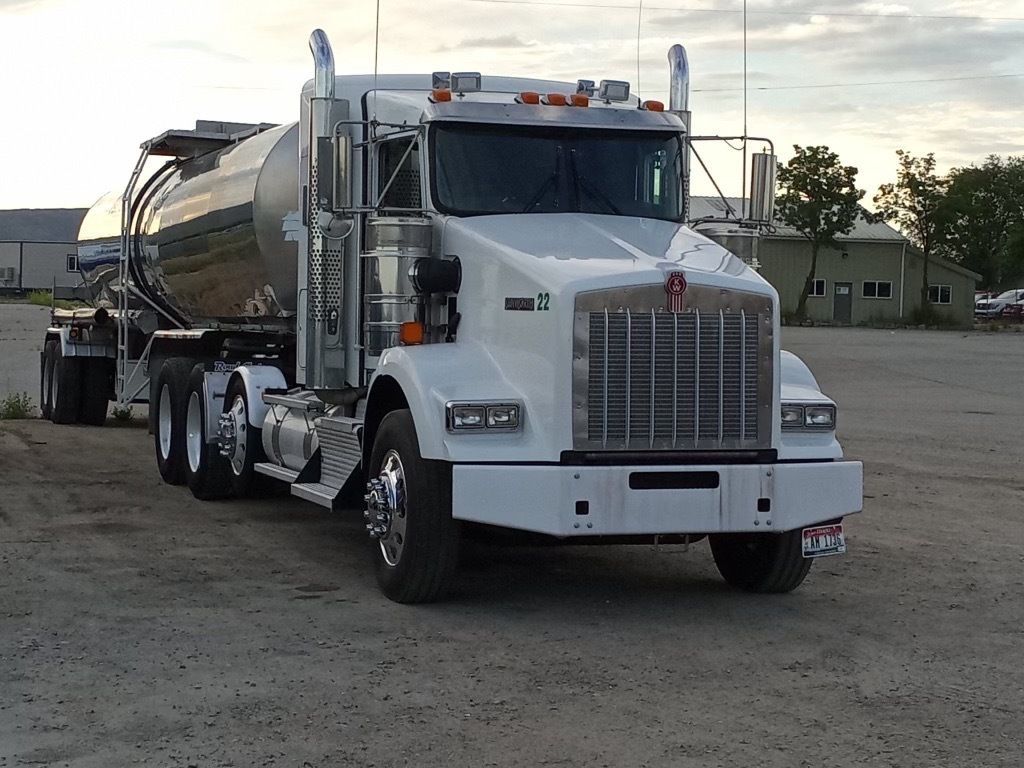How Does Wastewater Transport Work? All About Wastewater Transport

Wastewater transport is a vital process that affects everyone, yet it often goes unnoticed.
Understanding how it works can help us appreciate the complex systems that keep our communities clean and safe.
This blog will explore the ins and outs of wastewater transport, from the basics to the different systems used, and highlight its importance to public health and the environment.
What is Wastewater Transport?
Wastewater transport is the process of moving wastewater from homes, businesses, and other establishments to treatment plants where it can be safely processed and disposed of. This process involves a network of pipes, pumps, and sewers designed to handle the various types of waste we produce daily.
At its core, wastewater transport ensures that the dirty water and waste we generate are collected and treated, preventing contamination of our water supply and environment. The efficiency and reliability of these systems are crucial for maintaining public health and environmental quality.
How Does Wastewater Transport Work?
There are several methods used to transport wastewater, each with its own unique mechanisms and components. Here, we’ll explore the primary systems:
Gravity Sewer Systems
Gravity sewer systems rely on the natural slope of the land to move wastewater. These systems use a network of underground pipes that gradually slope downward, allowing gravity to pull the wastewater toward treatment facilities. Gravity sewers are common in urban areas where the terrain supports this natural flow.
Pressure Sewers
In areas where gravity alone isn't enough to move wastewater, pressure sewers come into play. These systems use pumps to create pressure, pushing wastewater through the pipes. Pressure sewers are often used in hilly or flat areas where gravity systems would be inefficient.
Vacuum Sewers
Vacuum sewers use a vacuum to move wastewater through the system. These systems are typically used in areas where traditional sewer systems would be difficult or expensive to install, such as low-lying or flood-prone regions. Vacuum stations create the necessary suction to transport wastewater to treatment plants.
Pumping Stations
Pumping stations are critical components in both pressure and gravity sewer systems. These stations house pumps that help move wastewater through the pipes, especially in areas where the natural flow would be insufficient. They ensure that wastewater can be transported over long distances and varied terrains.
By understanding these different systems, we can appreciate the complexity and engineering behind wastewater transport. Each method has its specific applications, ensuring that no matter the landscape, wastewater can be efficiently moved to where it needs to go.
Importance of Wastewater Transport
Wastewater transport plays a crucial role in maintaining both public health and environmental integrity. Here’s why it’s so important:
Public Health Protection
Proper wastewater transport systems help prevent the spread of waterborne diseases. By efficiently moving wastewater away from populated areas and treating it before it can contaminate drinking water sources, these systems protect communities from harmful pathogens and pollutants. This is especially vital in densely populated urban areas where the risk of disease transmission is higher.
Environmental Protection
Transporting wastewater to treatment plants ensures that harmful substances are removed before the water is released back into the environment. Without these systems, untreated wastewater could flow directly into rivers, lakes, and oceans, leading to significant pollution and damage to aquatic ecosystems. Effective wastewater transport systems help maintain clean water bodies, support biodiversity, and prevent environmental degradation.
Sustainability and Resource Management
Modern wastewater transport systems are designed with sustainability in mind. By efficiently moving and treating wastewater, these systems help conserve water resources. Treated wastewater can be reused for various purposes, such as irrigation and industrial processes, reducing the demand for fresh water. This is particularly important in regions facing water scarcity.
Economic Benefits
Investing in reliable wastewater transport infrastructure can lead to long-term economic benefits. Clean water and a healthy environment attract businesses and tourism, boosting local economies. Moreover, efficient wastewater management reduces the costs associated with waterborne diseases and environmental cleanup, providing significant savings for communities.
Regulatory Compliance
Wastewater transport systems help municipalities comply with environmental regulations. These regulations are designed to protect public health and the environment by setting standards for wastewater treatment and discharge. Compliance ensures that communities avoid legal penalties and contribute to broader environmental protection efforts.
In summary, wastewater transport is essential for safeguarding public health, protecting the environment, promoting sustainability, and ensuring economic stability. Properly designed and maintained systems are vital for the well-being of any community.
Environmental Impact of Wastewater Transport
Wastewater transport systems are crucial but come with environmental impacts. Understanding these impacts helps us mitigate risks and improve systems.
Potential for Leaks and Spills
Old or damaged pipes can leak. These leaks can contaminate soil and water. Regular maintenance is essential to prevent this. Quick repairs reduce environmental damage. Modern technology, like smart sensors, can detect leaks early, helping to avoid major spills.
Energy Consumption
Transporting wastewater requires energy. Pumps and treatment plants use a lot of electricity. This energy use contributes to greenhouse gas emissions. Improving energy efficiency is crucial. Renewable energy sources, like solar or wind power, can help reduce the carbon footprint of wastewater transport.
Innovations in Wastewater Transport Technology
New technologies aim to reduce environmental impacts. Advanced materials for pipes can prevent leaks. Energy-efficient pumps and smart systems optimize transport. Innovations like these are vital for sustainable wastewater management.
Environmental Regulations
Strict regulations help minimize environmental damage. Wastewater transport companies must comply with these rules. Regulations ensure safe transport and proper treatment of wastewater. Non-compliance can lead to heavy fines and environmental harm.
Challenges in Rural Areas
Rural areas face unique challenges in wastewater transport. Long distances and scattered populations make it harder to build and maintain systems. Innovative solutions, like decentralized treatment plants, can address these issues. These solutions help protect rural environments and ensure clean water.
Conclusion
Wastewater transport is vital for public health and environmental protection. Different systems, such as gravity sewers, pressure sewers, vacuum sewers, and pumping stations, ensure that wastewater is effectively moved to treatment plants. Understanding these systems helps us appreciate their role in maintaining clean, healthy communities.
Call to Action
For reliable wastewater transport and related services, choose Eco of Idaho. They offer grease trap cleaning, oil collection, grease trap pumping, and bulk wastewater transport. Service areas include Boise, ID; Idaho Falls, ID; and Le Grande, OR. With affordable rates, multiple services through a single contact, and discounted grease trap services due to their cooking oil sales, Eco of Idaho is your best choice. Contact Eco of Idaho today for all your wastewater transport needs.
Frequently Asked Questions
How does wastewater transport work?
Wastewater transport involves a network of pipes, pumps, and sewers that move wastewater from residential and commercial areas to treatment facilities. Systems like gravity sewers, pressure sewers, vacuum sewers, and pumping stations ensure efficient transport based on regional needs.
What are the best practices in wastewater transport systems?
Best practices include regular maintenance of pipes and pumps, using energy-efficient technologies, and adhering to environmental regulations. Also, implementing advanced monitoring systems helps detect and address leaks and spills early.
What innovations in wastewater transport technology are currently in development?
Recent innovations include the use of smart sensors to detect system leaks and inefficiencies, development of more durable pipe materials, and the integration of renewable energy sources to power transport systems.
What are the main environmental impacts of wastewater transport?
Environmental impacts can include contamination from leaks and high energy consumption. Addressing these impacts involves regular system maintenance, using sustainable energy sources, and upgrading old infrastructure.
How can I find wastewater transport services near me?
To find local wastewater transport services, check online directories or local business listings. For specific services in Idaho and nearby regions, consider contacting Eco of Idaho.
What regulations must wastewater transport companies follow?
Companies must comply with local, state, and federal regulations that dictate wastewater handling, treatment standards, and environmental protection measures to prevent pollution.
What safety procedures are crucial in wastewater transport?
Key safety procedures include regular inspections, proper handling and disposal of waste, emergency preparedness plans, and training for handling hazardous materials.
What are the costs associated with wastewater transport?
Costs vary based on the distance wastewater must be transported, the type of transport system used, and local infrastructure. Efficiency upgrades and regular maintenance can help manage these costs.










